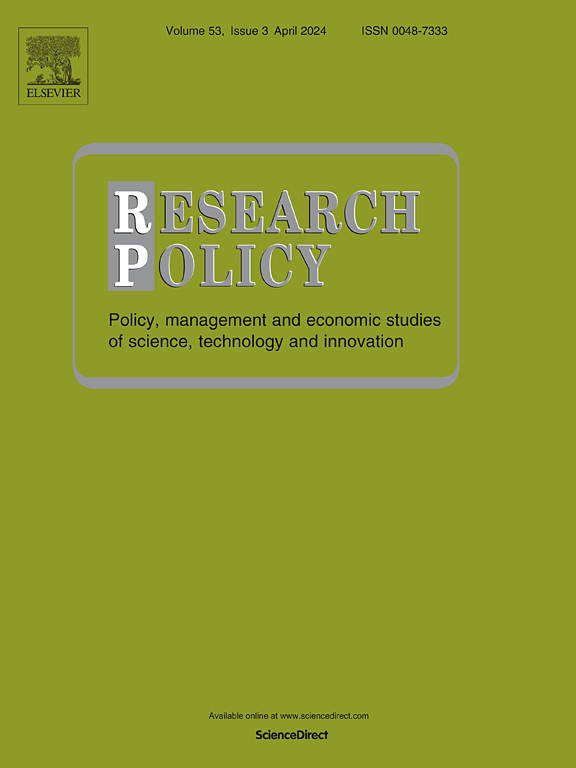概念与创造力:1894-1913年美国的概念验证演示和航空创新
IF 8
1区 管理学
Q1 MANAGEMENT
引用次数: 0
摘要
本文将概念验证演示概念化为一种功能新技术的公开展示,并在1894年至1913年间的美国航空背景下调查其对技术进步和工业出现的影响。第一次动力飞行的成功演示标志着航空发展的分水岭,并提供了一个概念验证事件,将极大地改变以飞行为重点的创新的轨迹和轨迹。我们对这些动态的历史案例研究表明,在飞机成功的公开演示之后,航空专利的数量急剧增加。我们发现,美国航空创新的地理位置从1908年开始发生了变化,这一年莱特兄弟首次公开展示了他们的早期飞机。在这次活动之后,航空专利申请在地理上靠近示范点的地区和创新活动水平较高的地区增长最为显著。我们观察到,发明家更加关注与概念验证设计相关的飞机新元素,我们还发现,在概念和技术上与演示的固定翼飞机不同的替代飞行装置的专利申请有所增加。最终,这项工作将微观和宏观层面的分析和观点联系起来,为支撑技术进步的创造性过程提供了一个全面的说明,并有助于我们理解围绕新技术的产业出现的孵化阶段。本文章由计算机程序翻译,如有差异,请以英文原文为准。
Concept and creativity: Proof-of-concept demonstration and aviation innovation in the United States, 1894–1913
This article conceptualizes proof-of-concept demonstration as the public display of a functioning new technology and investigates its effect on technological progress and industry emergence within the context of aviation in the United States between 1894 and 1913. The first successful demonstration of powered flight marked a watershed moment in the development of aviation and provided a proof-of-concept event that would dramatically change the trajectory and locus of flight-focused innovation. Our historical case study of these dynamics indicates that there was a dramatic increase in the amount of aviation patenting following successful public demonstrations of the airplane. We find that the geographic locus of aviation innovation in the United States shifted starting in 1908, the year in which the Wright brothers first publicly demonstrated their early aircraft. After this event, aviation patenting increased most significantly in areas that were geographically near to the demonstration site and in areas with high pre-existing levels of innovative activity. We observe that inventors placed greater focus on new elements of airplanes related to the proof-of-concept design, and we also find an increase in patenting of alternative types of flying devices that were conceptually and technologically distinct from the demonstrated fixed-wing airplane. Ultimately, this work links micro- and macro-levels of analysis and perspectives to provide a comprehensive account of the creative processes that underpin technological advance, and it contributes to our understanding of the incubation stage of industry emergence around new technologies.
求助全文
通过发布文献求助,成功后即可免费获取论文全文。
去求助
来源期刊

Research Policy
MANAGEMENT-
CiteScore
12.80
自引率
6.90%
发文量
182
期刊介绍:
Research Policy (RP) articles explore the interaction between innovation, technology, or research, and economic, social, political, and organizational processes, both empirically and theoretically. All RP papers are expected to provide insights with implications for policy or management.
Research Policy (RP) is a multidisciplinary journal focused on analyzing, understanding, and effectively addressing the challenges posed by innovation, technology, R&D, and science. This includes activities related to knowledge creation, diffusion, acquisition, and exploitation in the form of new or improved products, processes, or services, across economic, policy, management, organizational, and environmental dimensions.
 求助内容:
求助内容: 应助结果提醒方式:
应助结果提醒方式:


